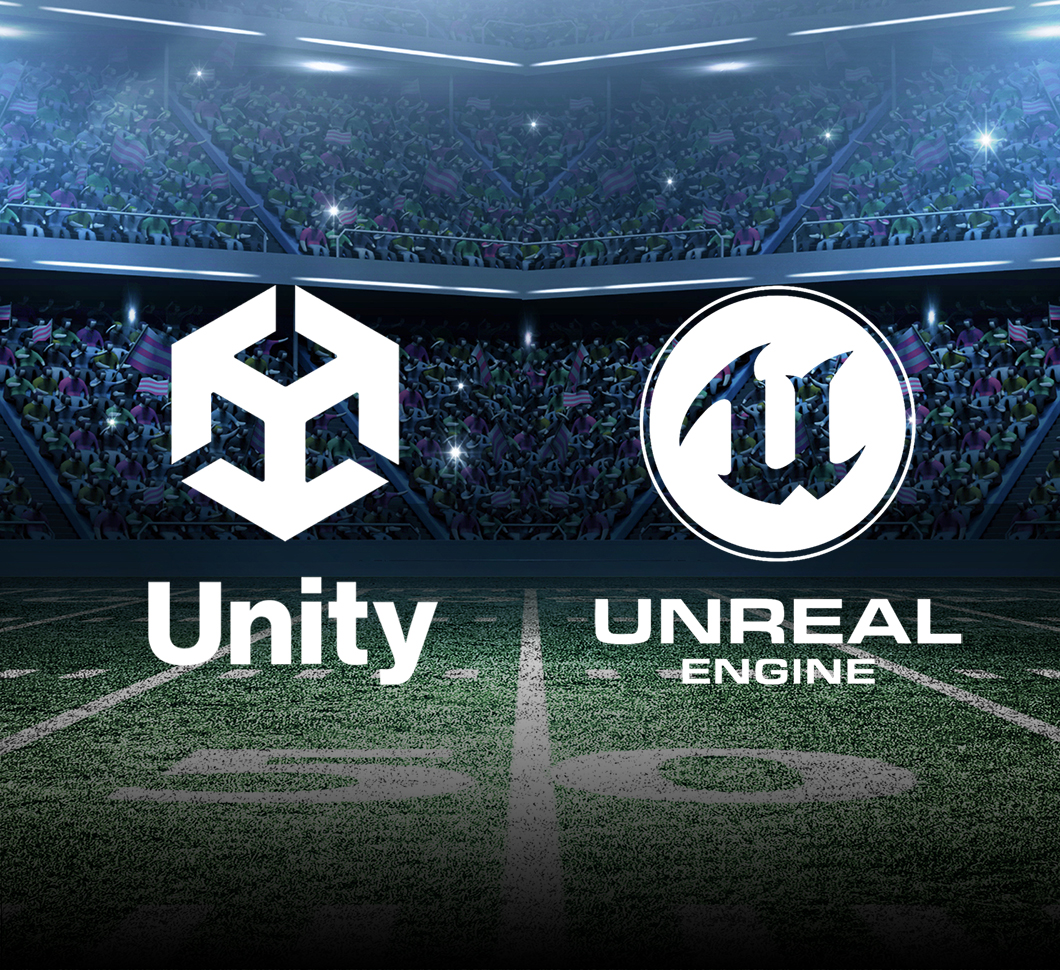The GameDev industry has created an environment where more and more solutions are born to enhance the efficiency of game developers. Within it, Unity is an acclaimed beacon for game development creators, offering a versatile platform to bring visions to life.
However, as with any powerful tool, maximizing its potential requires a deep understanding of its intricacies. For example, Unity performance optimization isn't just a technical necessity; it's an art that ensures gamers experience fluid gameplay, immersive graphics, and responsive mechanics.
As an experienced Unity game development studio, Game-Ace delves into the importance of optimization in Unity, uncovers common bottlenecks, and provides actionable techniques to enhance your game's performance.
Unity Performance Optimization in Game Development: Why Do You Need It?
Unity, one of the world's leading game development engines, offers developers various tools and features to craft visually stunning and interactive games. But with great power comes great responsibility. For developers, it's imperative to ensure that the games they create look and feel fantastic and run smoothly across various devices. This is where Unity performance optimization becomes essential.
Performance optimization is the bridge between a game's potential and its real-world execution. A game can have the most intricate graphics, complex mechanics, and engaging storylines, but players will quickly lose interest if it lags, crashes, or consumes too much power. Modern gamers have high expectations from gaming products, and game creators cannot afford to have even minor performance issues.
Furthermore, with the rise of cross-platform gaming, developers face the challenge of ensuring consistent performance across PCs, consoles, and mobile devices. Each platform has unique specifications and limitations, making optimization even more crucial.
In essence, Unity performance optimization is not just about meeting technical benchmarks. It's about enhancing user experience, maximizing player retention, and ensuring the game's vision is realized without compromise. Investing time and resources into optimization ensures that the final product is not simply playable but enjoyable.
The Common Performance Bottlenecks in Unity
Unity, while one of the best solutions for game development, is not immune to performance issues. Developers often encounter specific bottlenecks that can hinder a game's smooth operation. Recognizing these common challenges is the first step toward addressing and resolving them.
Performance bottlenecks can be visualized as narrow points in a system where the flow of operations slows down due to certain limitations. In Unity, these bottlenecks can arise from various sources, ranging from inefficient code to high-resolution assets.
| Bottleneck Area | Common Issues |
| Scripting | Inefficient loops, redundant calculations, misuse of coroutines. |
| Graphics | Overdraw, high-poly models, unoptimized shaders. |
| Physics | Excessive colliders, complex calculations, real-time simulations. |
| Memory | Large assets, memory leaks, frequent garbage collection. |
| Asset Loading | Synchronous loading, loading large assets at runtime. |
Addressing these bottlenecks often requires a combination of profiling, refining, and sometimes rethinking certain aspects of the game design. For instance, a visually stunning scene can be a performance nightmare if not optimized correctly. Similarly, a complex AI system can slow down gameplay if not efficiently scripted.
The Main Unity's Performance Challenges
Unity occasionally presents developers with performance challenges. These bottlenecks, if not addressed, can significantly impact the gameplay experience. Recognizing and understanding these challenges is essential for smooth game operation. Here are the main of them.
- Scripting issues. Inefficient loops, redundant calculations, and misuse of coroutines can slow down game logic.
- Graphics overload. Excessive use of high-poly models and unoptimized shaders causes overload, which strains the rendering process.
- Physics complications. Over-reliance on real-time simulations, excessive colliders, and complex calculations hinders game physics.
- Memory strains. Memory leaks, large unoptimized assets, and frequent garbage collection lead to unexpected lags, which can annoy players.
- Asset loading delays. Synchronous loading and on-the-fly loading of large assets disrupt gameplay continuity, decreasing its playability.
The Role of Profiling and Analysis Tools for Optimization
As you can see, a successful game requires through-through optimization. While developers can make educated guesses about potential performance issues, nothing beats the precision of dedicated profiling and analysis tools. These tools are pivotal in identifying, analyzing, and rectifying performance bottlenecks, ensuring that games run smoothly across various platforms.
Introduction to Unity Profiling Tools
Unity offers built-in profiling tools to help developers monitor and analyze various aspects of their games. They empower developers to dive deep into their game's performance metrics, ensuring that each aspect of the game is optimized for the best player experience.
| Unity Profiling Tool | Description |
| CPU Profiler | Analyzes the performance of scripts, rendering, physics, and other tasks that run on the CPU. Helps identify CPU-intensive operations. |
| GPU Profiler | Provides insights into graphics rendering, helping developers identify bottlenecks related to shaders, draw calls, and other GPU operations. |
| Memory Profiler | Offers a detailed breakdown of memory usage, highlighting potential memory leaks and helping optimize asset utilization. |
| Audio Profiler | Monitors audio performance, ensuring that sound effects, music, and other audio elements are not consuming excessive resources. |
| Physics Profiler | Analyzes the performance of the physics engine, helping pinpoint issues related to colliders, rigidbodies, and physics simulations. |
| UI Profiler | Specifically designed for Unity's UI system, this tool helps optimize canvas rendering, layout calculations, and other UI-related tasks. |
| Networking Profiler | Monitors network operations, essential for multiplayer games, ensures efficient data transmission and minimizes latency. |
Why Use Profiling Tools to Identify Performance Bottlenecks
The importance of profiling tools cannot be overstated. Here's why:
- Precision. Profiling tools offer accurate data, ensuring that developers focus on genuine performance issues rather than perceived ones.
- Comprehensive analysis. These tools provide a holistic view of game performance, covering everything from script execution to asset loading times.
- Time efficiency. Instead of manually sifting through code or assets, profiling tools quickly highlight problem areas and save valuable development time.
- Optimized resource allocation. Developers can allocate resources more effectively by understanding where the game is most resource-intensive.
Performance Analysis in Unity Projects: Case Studies
Our Unity developers have shared some cases of successfully using Unity performance analysis to overcome challenges. So, let’s contemplate the examples.
Case Study 1: The Overdraw Dilemma
Our developers noticed that a particular game scene was causing lag. Using Unity's Profiler, they identified an overdraw issue where multiple transparent objects overlapped, causing the GPU to render the same pixels repeatedly. The performance issue was resolved by optimizing the scene's design and reducing the number of overlapping objects.
Case Study 2: Scripting Inefficiencies
In another instance, a game featuring complex AI behaviors experienced unexpected slowdowns. The Unity Profiler revealed that specific AI scripts ran redundant calculations every frame. The game's performance improved dramatically after developers had optimized the scripts and caching frequently used calculations.
Case Study 3: Memory Management Woes
A mobile game crashed on devices with limited RAM. The Memory Profiler in Unity highlighted that certain high-resolution textures consumed significant memory. By compressing these textures and implementing a dynamic loading system, developers made the game more stable across all devices.
Case Study 4: Unity 2D Performance Optimization
In a 2D Unity game, players experienced frame drops during intense action sequences. Unity's Profiler pinpointed excessive CPU usage every time multiple animations played simultaneously. With Unity's 2D animation rigging, developers reduced the computational overhead, resulting in smoother gameplay during high-action moments.
The Major Unity Performance Optimization Techniques
As a leading game development platform, Unity offers many tools and features to bring creative visions to life. However, developers must prioritize performance optimization to ensure these visions translate into smooth, immersive gameplay experiences. Let's delve into the major techniques that can help optimize Unity projects for peak performance.
1. Code Optimization
At the heart of every game lies its code. Efficient and clean coding practices can significantly boost game performance.
- Avoiding redundant operations. Frequently calling functions like Update() or performing unnecessary calculations can slow down a game. It's essential to ensure that operations are only executed when needed.
- Use coroutines wisely. While coroutines are powerful, overusing or not yielding them appropriately can lead to performance drops.
- Object pooling. Instead of continuously instantiating and destroying objects, which can be CPU-intensive, developers can leverage object pooling to reuse objects.
- Optimize loops. Nested loops or loops that iterate over large datasets should be optimized or avoided when possible.
2. Asset Management
Assets, from 3D models to textures, play a crucial role in game aesthetics. However, they can also be a source of performance issues.
- Use LODs (Levels of Detail). Instead of always rendering high-poly models, developers can use LODs to display lower-poly models when objects are farther from the camera.
- Compress textures. High-resolution textures can be memory-intensive. Compressing them without significant quality loss can save valuable resources.
- Optimize animations. Developers should streamline animation as much as possible, as well as remove unnecessary keyframes, and use efficient rigs.
3. Memory Management
Effective memory management ensures that games run smoothly without crashes or lags.
- Garbage collection. While Unity's garbage collector helps manage memory, frequent garbage collection can cause performance hitches. Minimize object allocations during gameplay to reduce the frequency of garbage collection.
- Use static variables. Use static variables as they are allocated on the stack, which is faster than heap allocation.
- Unload unused assets. Regularly unload assets that are no longer needed using Resources.UnloadUnusedAssets() to free up memory.
4. Rendering and Graphics Optimization
Graphics are pivotal in a game's appeal but can also be resource-intensive.
- Reduce overdraw. Overdrawing occurs when the engine renders objects that aren't visible to the player. Use occlusion culling to render only what's visible.
- Optimize shaders. Custom shaders can enhance visuals but can be performance-heavy. Ensure they are optimized and use Unity's built-in shaders when possible.
- Use batching. Unity can batch small objects that use the same material, reducing draw calls and improving performance.
5. Physics and AI Optimization
Physics and AI bring games to life but can be computationally expensive.
- Limit physics calculations. Use simplified colliders (like box or sphere colliders) instead of mesh colliders. Also, ensure that physics calculations are only done when necessary.
- Optimize AI pathfinding. Instead of calculating paths every frame, do it at intervals or when specific events occur.
- Use layers. Ensure that physics objects only interact with layers they need to, reducing unnecessary calculations.
6. Streaming and Level Design
How a game loads and presents its levels can significantly impact performance.
- Use scene streaming. Instead of loading an entire level at once, stream parts based on the player's location, ensuring smoother gameplay.
- Optimize level geometry. Ensure that the game's levels are designed with performance in mind, using modular design and avoiding overly complex geometry.
- Cull non-essential elements. Remove or reduce the detail of objects that don't significantly impact gameplay or aesthetics.
Hire Unity developers who know how to get the most from this game engine.
The Main Aspects of Platform-Specific Optimization
The beauty of Unity lies in its ability to deploy games across multiple platforms. However, each platform comes with its unique set of challenges and specifications. To ensure optimal performance and user experience, developers must consider platform-specific optimizations. Let's explore the main aspects of optimizing Unity games for mobile, PC, and console platforms.
PC
The PC platform offers various hardware configurations, making optimization challenging yet rewarding.
- Resolution flexibility. PCs come with diverse monitor resolutions. Implementing a flexible resolution system ensures the game looks crisp on all screens.
- Graphics settings. Given the variability in PC hardware, offering customizable graphics settings allows players to tailor the game's visuals to their system's capabilities.
- Input methods. PCs support various input methods, from keyboards and mice to gamepads. Ensure smooth and responsive controls for all input types.
Mobile
With the limited resources and diverse ecosystem of mobile devices, Unity mobile game development requires a different optimization approach.
- Memory management. Mobile devices often struggle with limited RAM. Efficient memory usage and timely asset unloading are crucial to prevent crashes.
- Battery consumption. Optimize CPU and GPU usage to guarantee the game doesn't drain the device's battery rapidly.
- Touch controls. Mobile games primarily rely on touch controls. Choose the intuitive, responsive, and well-optimized for smaller screens.
- Adaptive UI. With many screen sizes and resolutions in the mobile market, create a flexible UI that adapts to different devices.
Console
As dedicated gaming machines, consoles offer a more standardized environment but come with challenges.
- Optimized load times. Consider the specific storage and memory configurations consoles have. Power up fast load times by optimizing asset streaming and reducing unnecessary data.
- Controller integration. Consoles rely on gamepad controls. Ensure that the game's controls are intuitive and responsive to gamepad inputs.
- Graphics and audio. Gamers pick consoles for high-quality gaming experiences. Optimize graphics and audio to take full advantage of the console's capabilities without causing performance drops.
Testing and Benchmarking in Unity Performance Optimization
When discussing performance optimization, we cannot skip testing and benchmarking. These processes not only identify potential bottlenecks but also validate the effectiveness of optimization efforts.
Within Unity, testing involves simulating gameplay scenarios to assess how the game behaves under various conditions. This can range from stress testing, where the game is deliberately pushed to its limits, to more routine tests that mimic average gameplay. Such tests can reveal issues like memory leaks, unexpected crashes, or lags that might not be evident during regular development.
Benchmarking, on the other hand, provides a quantitative measure of game performance. By setting specific performance targets, developers can run benchmark tests to see if the game meets, exceeds, or falls short of these standards. This can be particularly useful when optimizing multiple platforms, as each platform might have its own performance benchmarks.
While optimization techniques are vital, their effectiveness remains uncertain without proper testing and benchmarking. These processes ensure that the optimization efforts translate into tangible performance improvements, guaranteeing players a seamless and immersive gaming experience.
Successful Performance Optimization in Unity Games: The Prominent Examples
To ensure a positive player experience, many GameDev studios leverage Unity performance optimization. The creators of various acclaimed Unity-powered games talked about optimization in their interviews or briefly mentioned it in their blogs, e.g., Team Cherry, who released Hollow Knights, or Colossal Order, the developers of Cities: Skylines. At the same time, not many share detailed technical breakdowns after patching, so it is hard to know precisely what technique developers used.
However, after research, we managed to find some interesting cases of how different teams optimize their games in Unity.
Slime Rancher 2: Reaching The Next Level of Performance with a Follow-Up Game

Monomi Park, a team of 28, embarked on a journey to create a sequel to their first hit, the action game Slime Rancher. Their goal was to build a robust title with higher-fidelity graphics and optimized performance for PC and Xbox, expanding the world they presented in the first game.
The team leveraged the High Definition Render Pipeline (HDRP) for efficient scaling. Monomi Park also dived deeper into source code, achieving better sync between their workflows and Editor, making it easier for the team to analyze issues and develop relevant solutions.
Two Point Campus: Ensuring Impeccable Performance on Multiple Platforms

Two Point Studio, when releasing one of their product, Two Point Campus, needed to deliver performant code for numerous platforms they decided to conquer, namely PC, Mac, PlayStation4, PlayStation5, Xbox 1, Xbox X|S, and Nintendo Switch. To achieve this result, the company chose several optimization solutions.
First, the team used a Universal Render Pipeline (URP) for rendering optimization, which led to customized URP and high-quality rendering across all platforms. For memory management, the team used Unity Memory Profiler to identify oversized textures and unnecessary assets and employed the Scriptable Render Pipeline (SRP) Batcher for optimizing draw calls. At the same time, the team reports the usage of Backtrace for crash management.
Hexagonium: Powering Up an MMO Game for Seamless Experience
When delivering Hexagonium, a cross-platform MMO game, Game-Ace focused on ensuring high performance as one of the main priorities for the release. Therefore, our Unity development team leverages the best optimization practices described previously in this article, like avoiding redundant operations, batching usage, and optimizing animation.
Overall, Game-Ace's approach to developing Hexagonium involved a combination of technical optimization (server structuring, cross-platform development) and artistic optimization (balanced game design, artistic best practices). This holistic approach ensured that the game provided a high-quality experience to players across different platforms (Android, iOS, PC).
Access the Full Power of Unity with Game-Ace
Unity has been one of the market leaders for a long time. Therefore, it has a wide set of well-developed tools for efficient game-building. However, you need to find true pros to grasp the whole potential of performance optimization in Unity.
Game-Ace, a game development company with an extensive portfolio of Unity games, can become your reliable partner, revealing the secrets of Unity performance optimization. Our experts know how to deliver the most while spending the least. Feel free to contact us and discuss the possibility of our cooperation.
 Unity 6: Revolutionizing Game Development for the Next Generation
Unity 6: Revolutionizing Game Development for the Next Generation  Rapid Game Development: Unleashing Creativity with Speed and Precision
Rapid Game Development: Unleashing Creativity with Speed and Precision  How Much Do You Know About Games in the Unity 2D vs. 3D Battle?
How Much Do You Know About Games in the Unity 2D vs. 3D Battle?  The Best Game Engines: Research from Game-Ace Specialists
The Best Game Engines: Research from Game-Ace Specialists  Unity vs Unreal: Two Main Game Engines Compared by Game-Ace
Unity vs Unreal: Two Main Game Engines Compared by Game-Ace 


























